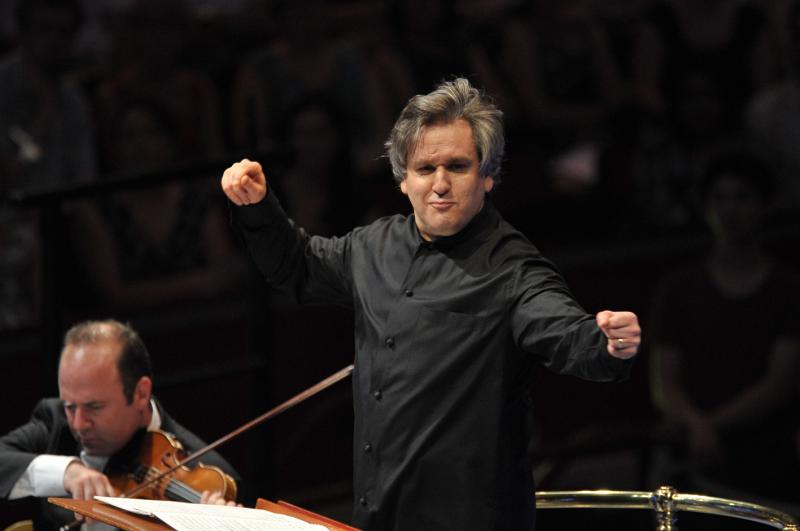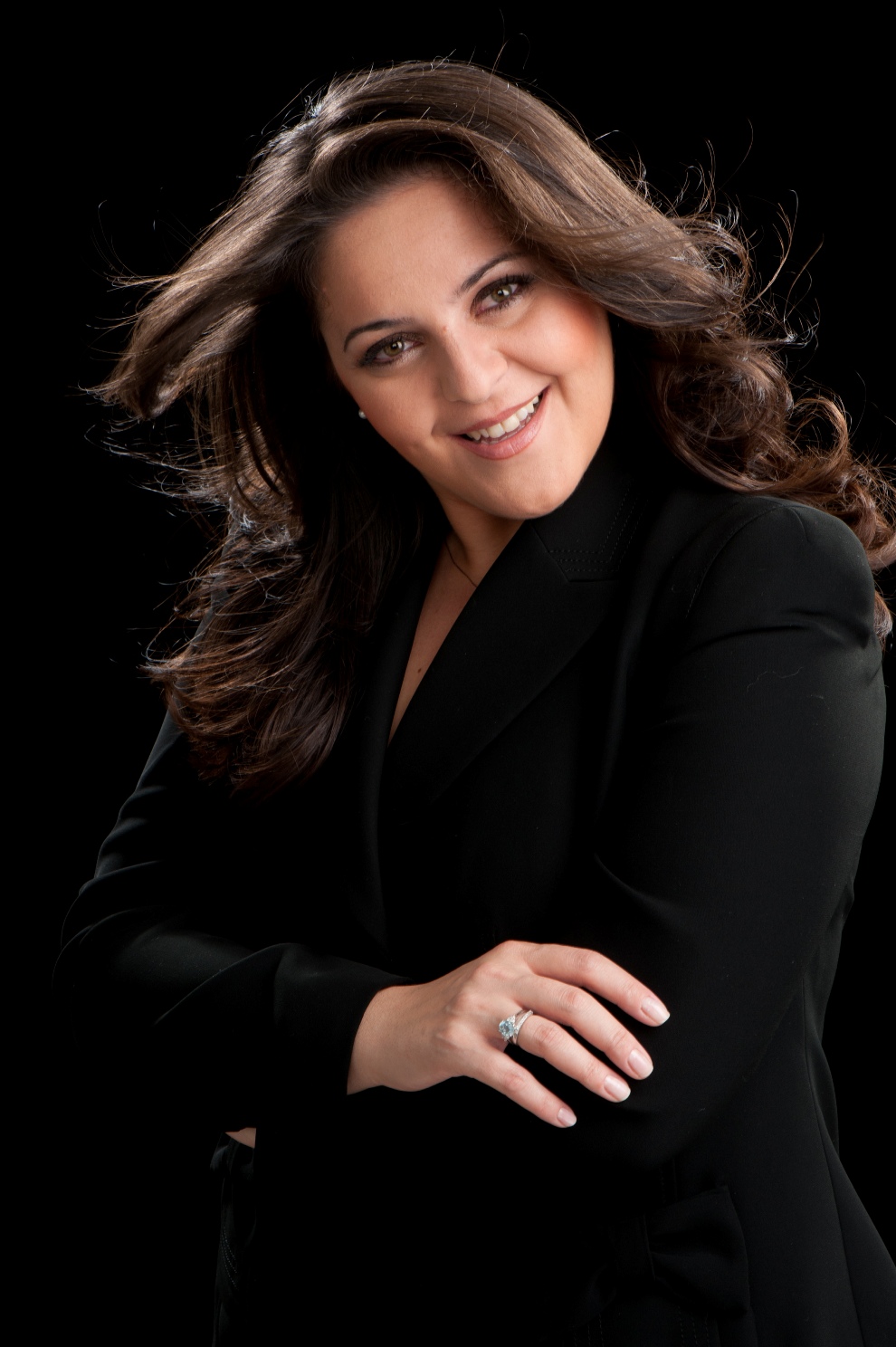Prom 12: Accademia di Santa Cecilia Chorus and Orchestra, Pappano | reviews, news & interviews
Prom 12: Accademia di Santa Cecilia Chorus and Orchestra, Pappano
Prom 12: Accademia di Santa Cecilia Chorus and Orchestra, Pappano
Italian choral singing shines, but the Verdi rarities on offer don't approach the Requiem

It’s a dilemma of anniversary years, and never more so than with Wagner’s and Verdi’s 200th birthdays: do you stick to the masterpieces or try and bring the rarities to life? No-one would have minded, I suspect, if Antonio Pappano and the Accademia di Santa Cecilia forces he has raised to the level of one of the world’s great ensembles had reprised their peerless Verdi Requiem.
Oh for the Ave Maria of Otello’s Desdemona, you couldn’t help thinking as ethereal Italian soprano Maria Agresta projected her lovely sounds so well into the Albert Hall in a relatively routine 1880 "Hail Mary". Wasn’t Verdi amazing, you realized, in the adjustments he made to his 1869 Libera Me, part of a composite memorial to Rossini, when he re-used it in the Requiem? Often just an altered note or an octave change would make all the difference. Perhaps because of the context, Pappano and Agresta (pictured below by Rolando Paolo Guezoni) kept it rather light, though the professional voices of the Santa Cecilia Chorus spat out their lines in the racy fugue with real Italianate intensity.
 The Four Sacred Pieces showcased the Roman voices' louds and softs to perfection in an acoustic which for once proved welcoming (choral Proms usually come off best). Another, this time unaccompanied Ave Maria, and the Laudi alla Vergine to Dante's beautiful text may have revealed a stray operatic voice in the pianissimos, but no chorus in the world could have given more focused attack to the big outbursts of the Stabat Mater and Te Deum.
The Four Sacred Pieces showcased the Roman voices' louds and softs to perfection in an acoustic which for once proved welcoming (choral Proms usually come off best). Another, this time unaccompanied Ave Maria, and the Laudi alla Vergine to Dante's beautiful text may have revealed a stray operatic voice in the pianissimos, but no chorus in the world could have given more focused attack to the big outbursts of the Stabat Mater and Te Deum.
The trouble with these longer and richly if selectively orchestrated pieces is that Verdi seems so keen to illustrate every turn of the religious texts that any longer line through the often very pictorial narrative never stands a chance. The melodies, such as they are, come across as second-drawer compared to the unfaltering inspiration of the Requiem, and much more bound by 19th century expectations of religious choral music.
Second-drawer, too, are most of the ideas in the curious String Quartet of 1873, arranged here for string orchestra by Carl Herrmann. The exception, a slow-waltz theme in an over-extended second movement which quickly lost the restless audience’s attention, could stand alongside the final death-dance in Un ballo in maschera. In the second subject of the opening Allegro, we hear Desdemona again; in the whirling Prestissimo, the ballet music of Macbeth’s witches. And for all the vivid dynamic and rhythmic contrasts Pappano urged from his now-superb Santa Cecilia strings, lightweight the piece remained: best enshrined in this form, as I first heard it, serving choreography in Kenneth MacMillan’s The Four Seasons for the Royal Ballet. Four star performances all round, then, but despite the enterprise only two for the programme.
rating
Share this article
The future of Arts Journalism
You can stop theartsdesk.com closing!
We urgently need financing to survive. Our fundraising drive has thus far raised £49,000 but we need to reach £100,000 or we will be forced to close. Please contribute here: https://gofund.me/c3f6033d
And if you can forward this information to anyone who might assist, we’d be grateful.

Subscribe to theartsdesk.com
Thank you for continuing to read our work on theartsdesk.com. For unlimited access to every article in its entirety, including our archive of more than 15,000 pieces, we're asking for £5 per month or £40 per year. We feel it's a very good deal, and hope you do too.
To take a subscription now simply click here.
And if you're looking for that extra gift for a friend or family member, why not treat them to a theartsdesk.com gift subscription?
more Classical music
 Echo Vocal Ensemble, Latto, Union Chapel review - eclectic choral programme garlanded with dance
Beautiful singing at the heart of an imaginative and stylistically varied concert
Echo Vocal Ensemble, Latto, Union Chapel review - eclectic choral programme garlanded with dance
Beautiful singing at the heart of an imaginative and stylistically varied concert
 Scott, Irish Baroque Orchestra, Whelan, RIAM, Dublin review - towards a Mozart masterpiece
Characteristic joy and enlightenment from this team, but a valveless horn brings problems
Scott, Irish Baroque Orchestra, Whelan, RIAM, Dublin review - towards a Mozart masterpiece
Characteristic joy and enlightenment from this team, but a valveless horn brings problems
 Classical CDs: Voice flutes, flugelhorns and froth
Baroque sonatas, English orchestral music and an emotionally-charged vocal recital
Classical CDs: Voice flutes, flugelhorns and froth
Baroque sonatas, English orchestral music and an emotionally-charged vocal recital
 Kanneh-Mason, Britten Sinfonia, Shave, Milton Court - a grin and a big beaming smile
A pair of striking contemporary pieces alongside two old favourites
Kanneh-Mason, Britten Sinfonia, Shave, Milton Court - a grin and a big beaming smile
A pair of striking contemporary pieces alongside two old favourites
 theartsdesk at the New Ross Piano Festival - Finghin Collins’ musical rainbow
From revelatory Bach played with astounding maturity by a 22 year old to four-hand jazz
theartsdesk at the New Ross Piano Festival - Finghin Collins’ musical rainbow
From revelatory Bach played with astounding maturity by a 22 year old to four-hand jazz
 First Person: Manchester Camerata's Head of Artistic Planning Clara Marshall Cawley on questioning the status quo
Five days of free events with all sorts of audiences around Manchester starts tomorrow
First Person: Manchester Camerata's Head of Artistic Planning Clara Marshall Cawley on questioning the status quo
Five days of free events with all sorts of audiences around Manchester starts tomorrow
 Goldscheider, Brother Tree Sound, Kings Place review - music of hope from a young composer
Unusual combination of horn, strings and electronics makes for some intriguing listening
Goldscheider, Brother Tree Sound, Kings Place review - music of hope from a young composer
Unusual combination of horn, strings and electronics makes for some intriguing listening
 theartsdesk Q&A: composer Donghoon Shin on his new concerto for pianist Seong-Jin Cho
Classical music makes its debut at London's K-Music Festival
theartsdesk Q&A: composer Donghoon Shin on his new concerto for pianist Seong-Jin Cho
Classical music makes its debut at London's K-Music Festival
 Helleur-Simcock, Hallé, Wong, Bridgewater Hall, Manchester review - moving lyricism in Elgar’s concerto
Season opener brings lyrical beauty, crisp confidence and a proper Romantic wallow
Helleur-Simcock, Hallé, Wong, Bridgewater Hall, Manchester review - moving lyricism in Elgar’s concerto
Season opener brings lyrical beauty, crisp confidence and a proper Romantic wallow
 Kohout, Spence, Braun, Manchester Camerata, Huth, RNCM, Manchester review - joy, insight, imagination and unanimity
Celebration of the past with stars of the future at the Royal Northern College
Kohout, Spence, Braun, Manchester Camerata, Huth, RNCM, Manchester review - joy, insight, imagination and unanimity
Celebration of the past with stars of the future at the Royal Northern College

Add comment